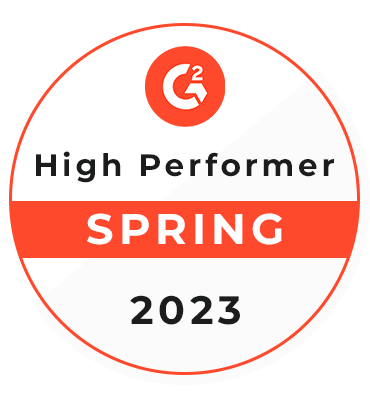How Does Salesforce Development Work ?
Manish Kumawat
Last Updated on: 23 April 2024
Today more than 150,000 businesses across all sizes and industries worldwide use the Salesforce platform to increase customer happiness and grow their businesses. Do you know how it works and why these many companies use this platform? We've listed the How Salesforce Development works.
How Salesforce Development Works in Practice?
Salesforce CRM functions as a single platform for managing, storing, and accessing customer data from many sources. Departments including sales, marketing, and customer support are united by Salesforce to facilitate efficient collaboration and central access to customer data, thereby streamlining customer relationship management. More individualized experiences for their customers can be provided with the use of this information.
Now, let's take a closer look at how Salesforce development works:
| Process | Details |
|---|---|
| Requirements Gathering | The first step in Salesforce development is gathering requirements from stakeholders to understand their needs, objectives, and pain points. Conducting interviews, workshops, and surveys to gather input and define the project scope is involved in this process. |
| Design and Planning | Once requirements are gathered, the next step is to design a solution that meets those requirements. Creating wireframes, mockups, and prototypes to visualize the user interface and functionality of the application is part of this. |
| Development | With the design in place, developers can begin building the solution using Salesforce's development tools and technologies. Writing custom code in Apex and LWC, configuring declarative features, and integrating with external systems are the main stages of this. |
| Testing | It goes through various testing to ensure it meets quality standards and performs after development. Unit testing, integration testing, and user acceptance testing to identify and resolve any issues or bugs are included in the testing phase. |
| Process | Details |
|---|---|
| Requirements Gathering | The first step in Salesforce development is gathering requirements from stakeholders to understand their needs, objectives, and pain points. Conducting interviews, workshops, and surveys to gather input and define the project scope is involved in this process. |
| Design and Planning | Once requirements are gathered, the next step is to design a solution that meets those requirements. Creating wireframes, mockups, and prototypes to visualize the user interface and functionality of the application is part of this. |
| Development | With the design in place, developers can begin building the solution using Salesforce's development tools and technologies. Writing custom code in Apex and LWC, configuring declarative features, and integrating with external systems are the main stages of this. |
| Testing | It goes through various testing to ensure it meets quality standards and performs after development. Unit testing, integration testing, and user acceptance testing to identify and resolve any issues or bugs are included in the testing phase. |
| Process | Details |
|---|---|
| Deployment | Once testing is complete, the solution is deployed to a production environment where it becomes available to end-users. Tools and processes are provided by Salesforce for deploying changes safely and efficiently. It minimizes downtime and disruption to business operations. |
| Maintenance and Support | Even after deployment, Salesforce development is an ongoing process. To maintain and support their Salesforce applications businesses must continue to address bugs, make enhancements, and adapt to changing business needs over time. |
Practical Examples of How Salesforce Development Works for Businesses
1. Sales Automation
Customizing Salesforce to automate lead management, opportunity tracking, and sales processes, boosting efficiency and accelerating deal closure for businesses.
Example:Salesforce is used by a manufacturing company to automate lead management, opportunity tracking, and quotation. Benefits: Sales productivity accelerates deal close, and streamlines sales operations of the organization by adapting Salesforce's sales cloud.
2. Customer Service Management
Implementing Salesforce Service Cloud to centralize customer interactions, resolve issues quickly, and deliver exceptional support across channels.
Example:Salesforce Service Cloud is used by a retail company to centralize its customer support activities. Benefits: Tailored and prompt customer assistance can be provided by businesses through features like case management, knowledge base, and omnichannel support, which increases client happiness and loyalty.
3. Marketing Automation
Leveraging Salesforce Marketing Cloud to automate marketing campaigns, personalize customer communications, and drive engagement and conversions.
Example:A healthcare provider leverages Salesforce Marketing Cloud to automate its marketing campaigns and engage patients at every stage of their journey. Benefits: The organization delivers targeted and timely communications that drive patient engagement and retention with email marketing, social media management, and journey building.
4. Community Engagement
Building branded online communities with Salesforce Community Cloud to foster collaboration, knowledge sharing, and engagement among customers, partners, and employees.
Example:A software company utilizes Salesforce Community Cloud to create an online community where users can collaborate, share knowledge, and provide feedback. Benefits: With discussion forums, knowledge articles, and idea exchanges, the company fosters a vibrant community that enhances user engagement and satisfaction.
5. Field Service Management
Optimizing field service operations with Salesforce Field Service Lightning, enabling efficient scheduling, dispatching, and mobile access for field technicians.
Example:An HVAC services provider adopts Salesforce Field Service Lightning to optimize its field service operations. Benefits: With features like intelligent scheduling, mobile access, and real-time updates, technicians can deliver efficient service, resolve issues promptly, and exceed customer expectations.
6. Partner Relationship Management
Enhancing partner collaboration and visibility with the Salesforce Partner Community, enabling seamless deal registration, lead sharing, and opportunity tracking.
Example:A technology firm implements the Salesforce Partner Community to strengthen its partner relationships. Benefits: By providing partners with access to sales resources, deal registration, and training materials, the company fosters collaboration, accelerates deal closure, and drives mutual success.
7. Data Analytics and Reporting
Harnessing the power of Salesforce Analytics Cloud to gain actionable insights from data, optimize performance, and make data-driven decisions.
Example:A financial institution harnesses Salesforce Analytics Cloud to gain actionable insights from its data. Benefits: With customizable dashboards, advanced analytics, and predictive intelligence, the institution can identify trends, mitigate risks, and make informed decisions to drive business growth.
8. Mobile App Development
Developing custom mobile applications with Salesforce Mobile SDK to extend Salesforce functionality and empower users to work from anywhere.
Example:A retail chain develops a custom mobile app using Salesforce Mobile SDK to enhance customer engagement and loyalty. Benefits: With features like store locators, product catalogs, and mobile payments, the app provides a seamless shopping experience and drives sales both online and in-store.
9. E-commerce Integration
Integrating Salesforce Commerce Cloud with e-commerce platforms to unify customer data, streamline order management, and provide seamless shopping experiences.
Example:An online retailer integrates Salesforce Commerce Cloud with its e-commerce platform to deliver personalized shopping experiences. Benefits: By unifying customer data, optimizing product recommendations, and streamlining checkout processes, the retailer enhances customer satisfaction and increases conversions.
10. Compliance and Security
Ensuring compliance with regulatory requirements and implementing robust security measures in Salesforce to protect sensitive data and maintain trust with customers.
Example:A healthcare organization ensures compliance with HIPAA regulations and protects patient data using Salesforce Shield. Benefits: With features like event monitoring, encryption, and data loss prevention, the organization maintains data integrity, confidentiality, and compliance with regulatory requirements.
How can I take advantage of this wonderful solution?
You need a reliable and knowledgeable Salesforce partner to benefit from this fantastic technology. SalesForce developers are available for hire to help with this procedure. In the next section, we'll talk about this in greater detail.
Hiring Model for Salesforce Developers
Depending on the needs of the client, different Salesforce developers have different interaction models. To help you select the best Salesforce developer engagement model for your company, we have provided a summary of the various models here:
Project-Based Engagement Model
The process of employing Salesforce developers to work on a particular project is referred to as this engagement mode. A developer is involved from the beginning of the project to map out the development plan, define the project's scope, and ensure its successful completion. The project's successful conclusion signals the end of the developers' involvement. A project-based Salesforce developer engagement model is the best choice for a business that has a specific project in mind and a deadline for completion. One other advantage of working with Salesforce developers under this strategy is that you will know just how much money you will need to spend on the project.
Model of Retainer-Based Engagement
Businesses that need to work with Salesforce developers on an ongoing basis should choose the retainer-based engagement model. The developer is prepared to offer continuing support and maintenance in order to help the client with any problems that could come up. The client pays a certain monthly cost in exchange for the developers completing a certain amount of work.
Staff Augmentation
Under the contractual approach known as "staff augmentation," businesses employ outside Salesforce engineers to collaborate with their team on a project. Together with the internal team, these extra resources work closely to make sure that specific needs are satisfied. Businesses that need to quickly expand their workforces without becoming bogged down in the tedious hiring process might consider staff augmentation. It helps businesses to quickly add the resources and expertise required to meet obligations and close vital skill gaps in their staff.
How Can You Reduce the Cost of Hiring a Developer for Salesforce?
- Define Project Scope Clearly: Ensure project requirements are well-defined to prevent scope creep, which can lead to unnecessary work and increased costs during development.
- Consider Remote Hiring: Explore hiring freelance or remote Salesforce developers to avoid overhead costs associated with maintaining a full-time, in-house team, including office space and benefits.
- Flexible Hiring Arrangements: Opt for part-time or contract-based hiring models to minimize long-term financial commitments while still accessing the required expertise.
- Offshore Development: Explore offshore development options in regions with lower labor costs, allowing for significant savings without compromising quality or expertise.
- Competitive Compensation: Offer competitive compensation packages to attract skilled developers, ensuring the quality of work while balancing cost-effectiveness.
- Pre-built Solutions: Leverage Salesforce's AppExchange for pre-built solutions and integrations, reducing the need for extensive custom development and associated expenses, such as coding and testing.
Hire Salesforce Developers from Fulminous Software
Engage Fulminous Software's Salesforce developers for specialized solutions and unmatched experience. Unmatchable wealth of experience and expertise our seasoned developers in Salesforce development can guarantee flawless integration, modification, and optimization for your business's requirements. By collaborating with Fulminous Software, you can fully utilize Salesforce to ensure the success of your company.

 Verified
Expert in Software & Web App Engineering
Verified
Expert in Software & Web App Engineering
I am Manish Kumawat, co-founder of Fulminous Software, a top leading customized software design and development company with a global presence in the USA, Australia, UK, and Europe. Over the last 10+ years, I am designing and developing web applications, e-commerce online stores, and software solutions custom tailored according to business industries needs. Being an experienced entrepreneur and research professional my main vision is to enlighten business owners, and worldwide audiences to provide in-depth IT sector knowledge with latest IT trends to grow businesses online.
Partner with Top-Notch Web Application Development Company!
Discuss your Custom Application Requirements on info@fulminoussoftware.com or call us on + 1 803 310 5187.
15 Days Risk-Free Trial

